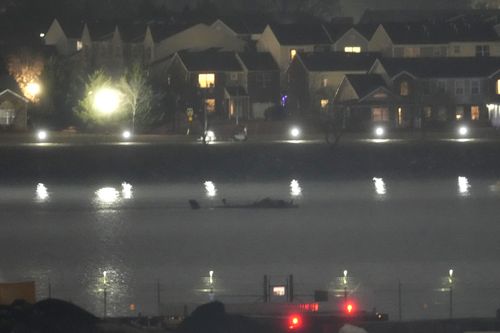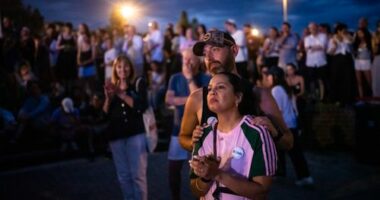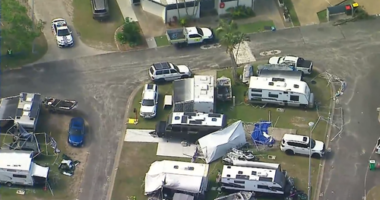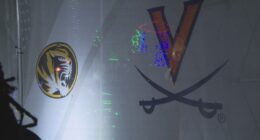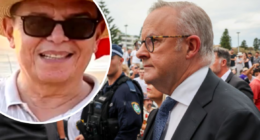Share this @internewscast.com
The most significant discoveries include that the helicopter’s altimeter gauge was malfunctioning, and flight controllers had previously alerted the FAA about the potential hazards posed by helicopters.
At one point NTSB Chairwoman Jennifer Homendy scolded the FAA for not addressing safety concerns.
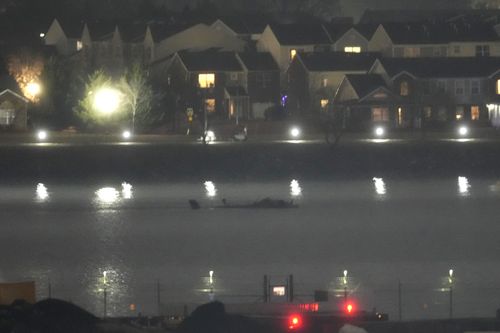
âAre you kidding me? Sixty-seven people are dead! How do you explain that? Our bureaucratic process?â she said.
âFix it. Do better.â
The tragic crash in January involved a team of young figure skaters, their families, coaches, and four union steamfitters from the Washington area.
The following insights were revealed during hearings about the accident, which unnerved travelers, especially as other crashes and near-misses this year compounded their flying anxieties:
The helicopterâs altimeter was wrong
The helicopter was flying at 85 metres â well above the 61 metre ceiling on that route âwhen it collided with the airliner.
Investigators reported that the pilots might have been unaware of the issue because the barometric altimeter they were depending on showed an altitude 24 to 30 meters lower than that recorded by the flight data recorder.
The NTSB subsequently found similar discrepancies in the altimeters of three other helicopters from the same unit.
An expert from Sikorsky, the manufacturer of the Black Hawks, noted that the model involved in the crash was older and did not have the air data computers present in newer versions, which provide more precise altitude readings.
Army Chief Warrant Officer Kylene Lewis stated to the board that a difference of 24 to 30 meters between the helicopter’s altimeters would not be concerning, as she would depend more on the radar altimeter rather than the barometric one at lower altitudes.
Plus Army pilots strive to stay within 30 metres of target altitude on flights, so they could still do that even with their altimeters that far off.
But Rick Dressler of medevac operator Metro Aviation told the NTSB that imprecision would not fly with his helicopters.
When a helicopter route like the one the Black Hawk was flying that night includes an altitude limit, Dressler said, his pilots consider that a hard ceiling.
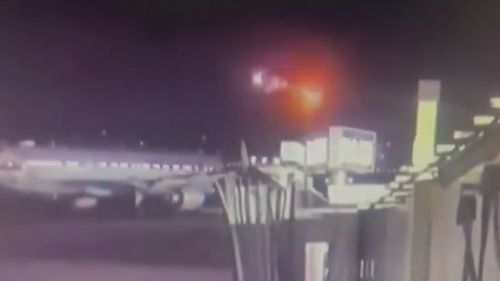
FAA and Army defend actions, shift blame
Both tried to deflect responsibility for the crash, but the testimony highlighted plenty of things that might have been done differently.
The NTSBâs final report will be done next year, but there likely will not be one single cause identified for the crash.
âI think it was a week of reckoning for the FAA and the US Army in this accident,â aviation safety consultant and former crash investigator Jeff Guzzetti said.
Army officials said the greater concern is that the FAA approved routes around Ronald Reagan International Airport with separation distances as small as 23 metres between helicopters and planes when planes are landing on a certain runway at Reagan.
âThe fact that we have less than 500-foot separation is a concern for me,â said Scott Rosengren, chief engineer in the office that manages the Armyâs utility helicopters.
Army Chief Warrant Officer David Van Vechten said he was surprised the air traffic controller let the helicopter proceed while the airliner was circling to land at Reaganâs secondary runway, which is used when traffic for the main runway stacks up and accounts for about 5 per cent of flights.
Van Vechten said he was never allowed to fly under a landing plane as the Black Hawk did, but only a handful of the hundreds of times he flew that route involved planes landing on that runway.
Other pilots in the unit told crash investigators it was routine to be directed to fly under landing planes, and they believed that was safe if they stuck to the approved route.
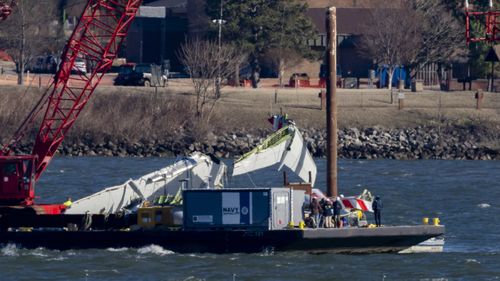
Frank McIntosh, the head of the FAAâs air traffic control organisation, said he thinks controllers at Reagan âwere really dependent upon the use of visual separationâ to keep traffic moving through the busy airspace.
The NTSB said controllers repeatedly said they would just âmake it work.â They sometimes used âsqueeze playsâ to land planes with minimal separation.
On the night of the crash, a controller twice asked the helicopter pilots whether they had the jet in sight, and the pilots said they did and asked for visual separation approval so they could use their own eyes to maintain distance.
Testimony at the hearing raised serious questions about how well the crew could spot the plane while wearing night vision goggles and whether the pilots were even looking in the right spot.
The controller acknowledged in an interview that the planeâs pilots were never warned when the helicopter was on a collision path, but controllers did not think telling the plane would have made a difference at that point.
The plane was descending to land and tried to pull up at the last second after getting a warning in the cockpit, but it was too late.
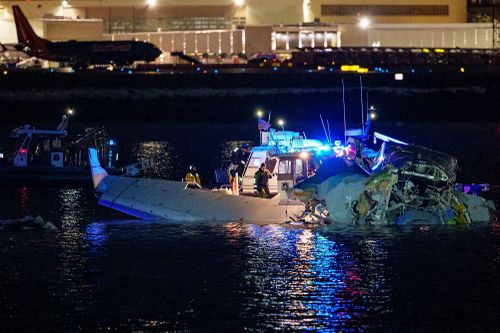
FAA was warned about the dangers of helicopter traffic in DC
An FAA working group tried to get a warning added to helicopter charts back in 2022 urging pilots to use caution whenever the secondary runway was in use, but the agency refused.
The working group said âhelicopter operations are occurring in a proximity that has triggered safety events.
These events have been trending in the wrong direction and increasing year over year.â
Separately, a different group at the airport discussed moving the helicopter route, but those discussions did not go anywhere. And a manager at a regional radar facility in the area urged the FAA in writing to reduce the number of planes taking off and landing at Reagan because of safety concerns.
The NTSB has also said the FAA failed to recognise a troubling history of 85 near misses around Reagan in the three years before the collision.
NTSB Chairwoman Jennifer Homendy said âevery sign was there that there was a safety risk and the tower was telling you that.â
But after the accident, the FAA transferred managers out of the airport instead of acknowledging that they had been warned.
âWhat you did is you transferred people out instead of taking ownership over the fact that everybody in FAA in the tower was saying there was a problem,â Homendy said.
âBut you guys are pointing out, âWelp, our bureaucratic process. Somebody should have brought it up at some other symposium.'”
